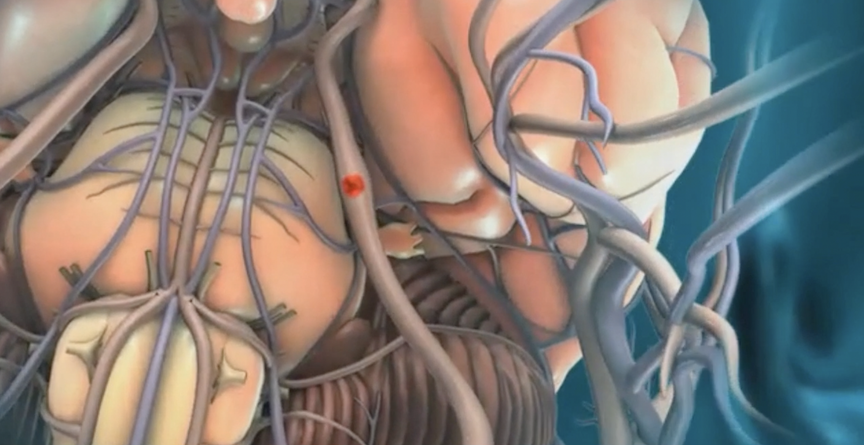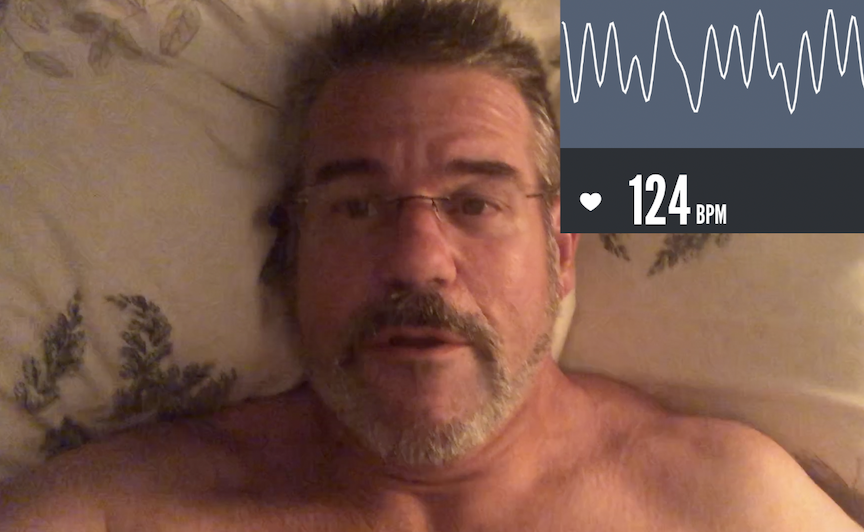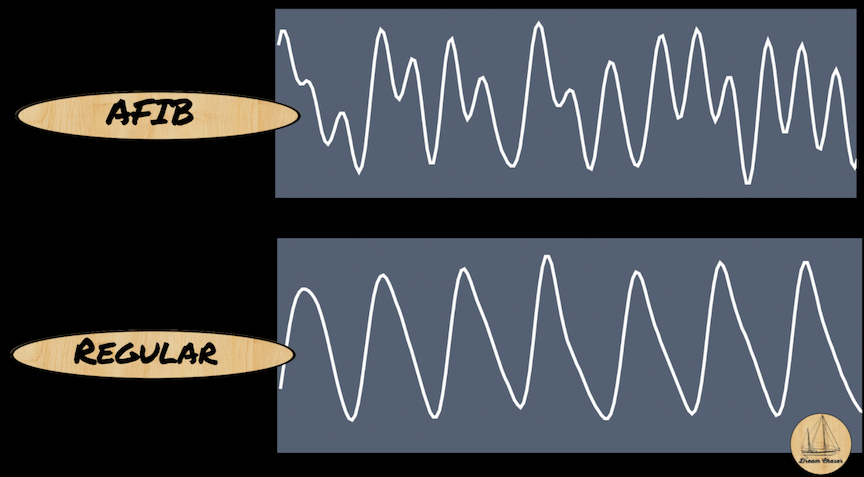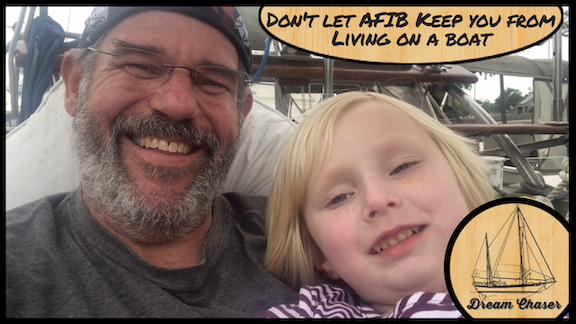What is AFIB
Arterial Fibrillation (AFIB) is a heart condition that does not allow the heart to beat in its normal sinus rhythm. I have had AFBI now for about five years.
My history with AFIB
The first time it happened to me, I thought I had a heart attack. I wasn’t sure what was happening, and after feeling a very week from just walking to the bathroom from the bed, I asked Deb to take me to the hospital.
For the record, if you go to an ER with chest pains, they are fast and waste no time in getting you stripped and into a gown, hooked up to everything they seemed to have to monitor stuff, and there was a team of folks around within about 20 seconds. It was crazy to witness and frankly seeing their excitability worried me even more.
Click here if video doesn’t play
What it does to blood flow
When the heart goes out of sinus rhythm (regular rhythm), the heart doesn’t sufficiently pump the blood. Think of a turkey baster or if you’re a boater that little bulb you squeeze to get fuel to the outboard. If you slowly pump and squeeze those bulbs slowly enough for the fluid to all come out, you get a smooth flow of fluid. If you were to press and let go many times a second, you wouldn’t get a full stream of liquid and would cause inconsistencies in the flow of fluid
It is similar to your heart. Those quick small pumps as a very rapid pace don’t allow the blood to flow as it should
The Risks

Now that you have an analogy in your head think of what happens when you squeeze and release that bulb part of the way, it causes turbulence, and it doesn’t all flow out of the bulb. The same happens in the chamber of your heart, and as the blood may sit in there in a little turbulent flow, it has a risk of coagulating (clotting). As we all know when you cut yourself, you stop bleeding because our blood coagulates and gets thick to fill those gaps. If a clot were to break free from the heart chamber and go out into an artery to the brain and get stuck, that is a stroke.
Strokes are the most significant risk factors for people with AFIB.
Medications
This blog post is not a place for a prescription. For basic information, however, it is worth noting that because of that risk factor of a stroke, many people with AFIB will be prescribed a blood thinner like Warfarin or Coumadin.
To control the rhythm (or in some cases the heart rate/speed) people may be prescribed metoprolol or propofol.
Recognizing AFIB

The biggest key to being able to live with AFIB is determining if you are in AFIB or not. I am lucky. I can tell when I go into it. Immediately I feel it in my chest and then to confirm it I check my heart rate/pulse. For some people they don’t ever feel it, that would make this harder, I would presume. If faced with not being able to feel it, I would do all I could to factor in all of the other feelings that may go along with it to see if over time I could learn to detect the signs of being in AFIB. For example shortness of breath is something I experience while I am in AFIB, jitters are something I feel when I am in AFIB. I think being aware of it is the first step in living with it.
Monitoring AFIB
Indeed, an EKG is the best way to monitor AFIB, but there are simple at-home devices and methods as well. For example, I use a subscription to a health app on my phone. It uses the camera and flash placed on your fingertip to see the pulses in the bloodstream. The app then maps out a rhythm for your pulse rate. Because your regular heart sinus rhythm is such a predictable pattern for most people, mine is very obvious when it is not in sinus rhythm.
There are also monitoring devices that you can get that are stand-alone and even one that is connected to your smartphone that leverages an app and a more sophisticated set of sensors in the case to record a more detailed heart evaluation.
What are your options
There is a risk assessment known as the CHADS assessment, and it creates a score of 0-4 or 0-6 depending on the method used. Zero being the lowest risk for stroke with AFIB. Doctors use this method to determine if you should be on an anticoagulant or blood thinner.
My risk score is low enough that I don’t have to be on a blood thinner. It also means that I don’t have to take medicine all the time. I can use what is called a ‘Pill in a Pocket’ method. I take 4 of these propofol pills when I am in AFIB. That gets me back into a regular rhythm within 12 hours in almost all cases.
Dealing with an AFIB episode

Because we live on a boat, I have to be careful not to exert myself if I am in AFIB. When I have an AFIB episode, I take my meds and lay down and try to go to sleep. I do this for two primary reasons. The first is that if I am sleeping, I don’t tend to “worry” about the AFIB. Second, I will reduce any physical strain on the body so as not to raise my heart rate due to activity. My resting heart rate is in the 60s. When I am in AFIB, it can be as high as 150-180 beats per minute so I wouldn’t want to exert myself on top of that.
If we are sailing, Deb takes over the helm and allows me to relax. In cases where we are in the middle of a hard sail, I would take the helm, and we would reef down or heave to if on a passage. If we are in coastal waters, Deb will take us to a place to anchor or a marina to stop in. We have found that there is no reason to have her go into a risky situation. Especially in cases without capable backup, so we plan around this.
My Disclaimer about AFIB
Please note that I am just a dude that happens to have AFIB. What I am sharing in this blog post is what I learned from my meetings with my doctors. I not only had the first diagnosis but sought a second opinion and asked an official ‘butt load’ of questions. By all means, you should not interpret this post as a substitute for doing your research with your doctor related to your situation. The information here is an account of what works for me given my risk factors.
My conclusions on Living with AFIB on a Boat

It can certainly be done. Don’t let it stop you from living your dreams. Talk to your Doctor and feel free to get a second opinion on treatment or management methods that work with you being away from a hospital.
I am glad I have not let it stop me from continuing with my lifestyle and dreams.

